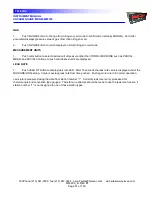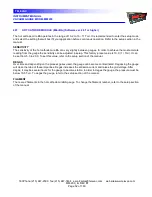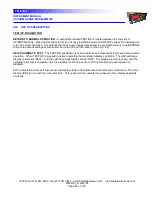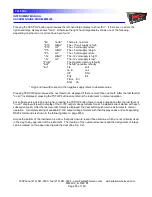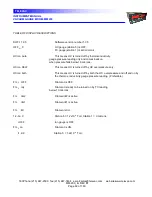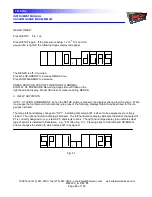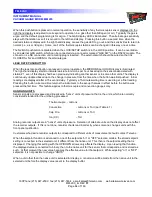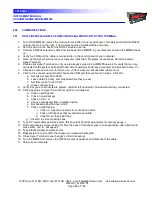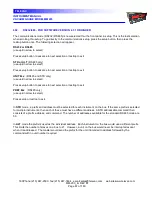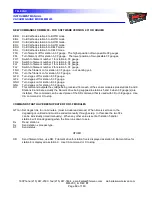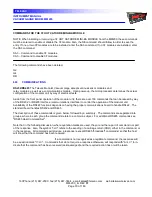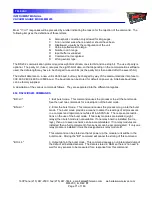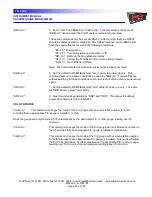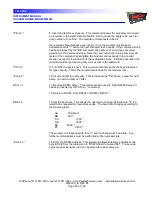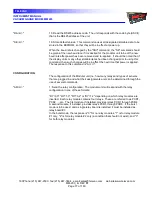
INSTRUMENT MANUAL
VACUUM GAUGE MODEL MM200
160Phone:(215) 947-2500 fax:(215) 947-7464 e-mail:[email protected] web site:www.televac.com
MM-200_im REV M
Page 63 of 160
TELEVAC
NOTE:
A relay can be "deactivated" (i.e., the relay is always de-energized) by giving its
"on" setpoint a value of zero. This is independent of the value set for the "OFF"
setpoint.
A relay can be "activated" (i.e., the relay is always energized) by giving its "on"
setpoint, for relays assigned to thermocouple gauges, a value in excess of 1100
microns .
NOTE:
After reassignment of a relay setpoint to a particular station, the new assignment is
maintained in nonvolatile memory.
After the last installed setpoint "OFF" setting has been viewed and/or changed,
pressing the SETUP button causes any changed values to be stored in nonvolatile
memory and causes the instrument to return to normal operation.
UNITS PUSHBUTTON
While all measurements are basically made in "native" units, they may be displayed in Pascals or millibars. The
selection is made by way of the "UNITS" push button. The selection can be stored either through RS232 / RS485,
or may be stored by going to Set Up and changing any set point, even if it is immediately changed back. Upon
coming out of Set Up the selected units will be stored. When ever the unit is subsequently powered up the selected
units will be the default units.
All Televac sensors have either Torr or Microns as their native units. The one exception is the Model 1F which has
Bars as it's native unit.
When native units are the selected display units, the LEDs above the displays will automatically show the proper
"TORR" or "MICRON" depending on the sensor and range.
If millibars or Pascals have been selected as the unit, then the displays above the sensor displays will remain
extinguished, and the "MBAR" or "PASCAL" in the center of the instrument will light up and both displays
regardless of the sensors will be displayed in those units.
The one exception is if one of the sensors is a Model 1F. In this case if native units are selected, then the LED
above the station that is not a 1F indicates the proper unit, and the "MBAR" display flashes. If "MBAR" is selected
then the "MBAR" LED stays lit (the other unit LEDs are out). If "PASCAL" is selected, both the "MBAR" and the
"PASCAL" LEDs flash alternately. This should be avoided if possible. The operator would have to be fully aware of
which sensor display is that of the 1F unit.



